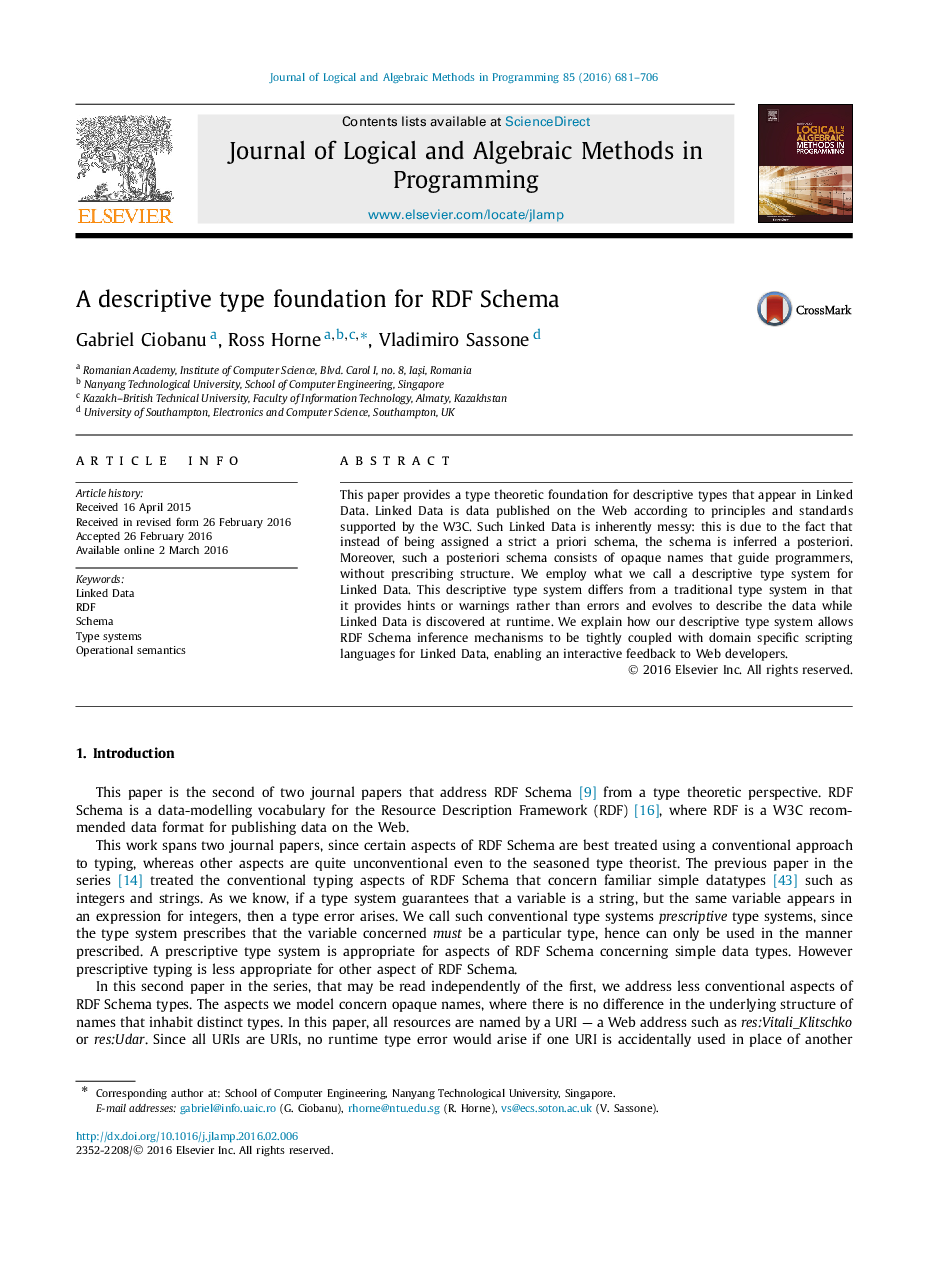| Article ID | Journal | Published Year | Pages | File Type |
|---|---|---|---|---|
| 432963 | Journal of Logical and Algebraic Methods in Programming | 2016 | 26 Pages |
•A novel descriptive type system inspired by the RDF Schema W3C recommendation.•Descriptive types enable tight interplay between RDF Schema and scripting languages for consuming Linked Data.•For ill-typed systems, warnings with a menu of suggestions are generated, rather than errors.•The type system is refined at runtime to help people make sense of subjective knowledge consumed from the Web.•Descriptive types can accommodate W3C standard compliant data and data published using weaker conceptual models.
This paper provides a type theoretic foundation for descriptive types that appear in Linked Data. Linked Data is data published on the Web according to principles and standards supported by the W3C. Such Linked Data is inherently messy: this is due to the fact that instead of being assigned a strict a priori schema, the schema is inferred a posteriori. Moreover, such a posteriori schema consists of opaque names that guide programmers, without prescribing structure. We employ what we call a descriptive type system for Linked Data. This descriptive type system differs from a traditional type system in that it provides hints or warnings rather than errors and evolves to describe the data while Linked Data is discovered at runtime. We explain how our descriptive type system allows RDF Schema inference mechanisms to be tightly coupled with domain specific scripting languages for Linked Data, enabling an interactive feedback to Web developers.
